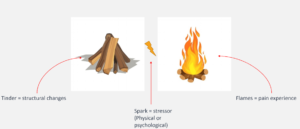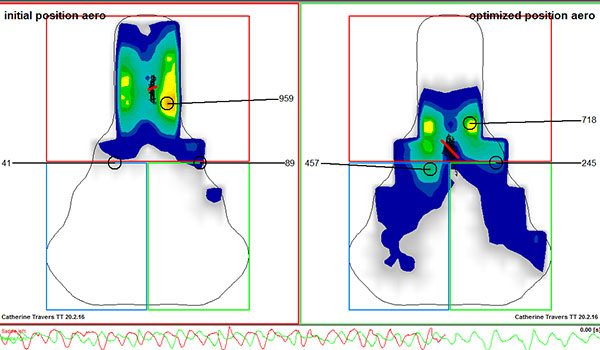Disc Bulge and Low Back Pain: What You Need to Know

Simen Sletten is an expert in lower back pain, disc bulge and sciatica.
Ever had an MRI for lower back pain that showed a disc bulge? You might be wondering if that’s the culprit behind your back pain. Here’s a breakdown of what disc bulges are and what they really mean for you.
Simen Sletten is an expert Sports Physiotherapist who has taught internationally about lower back pain and disc bulges. You can read Simen’s bio here!
Disc Bulge vs. Herniated Disc: What’s the Difference?
First things first, a disc bulge isn’t the same as a herniated disc. Imagine a disc in your spine like a car tyre with chewing gum inside of it (some people use a jelly donut as analogy instead, but this gives the impression that the back is fragile, when it actually is a very robust structure – like a car tyre). In a herniation, there’s a localized “bump” in the tyre, and sometimes it can crack and the “chewing gum” can come out. A disc herniation includes a protrusion, extrusion and a sequestration. With a disc bulge, the “tyre” stays intact, but the it just pushes out a bit more than usual. Look at the pictures below.

Types of disc bulge
Can a Disc Bulge Cause Pain?
Surprisingly, disc bulges are very common, even in people without back pain. Studies show many people have bulges without any symptoms. This means just seeing a bulge on an MRI doesn’t necessarily explain your pain.

Lots of people with disc bulges have no pain!
So, What Does Cause Back Pain?
The truth is, lower back pain can come from many sources. It’s often non-specific, meaning there’s no single cause we can pinpoint. Here’s an analogy: Think of your back pain like tinder. Disc bulges and other changes in your spine can be like tinder, ready to ignite. But a spark is needed to set it off. This spark could be stress, poor sleep, physical strain or other things. Some people have more “embers” than others, making them more prone to pain flares.

How pain works!
The Key to Feeling Better
The good news is there are ways to manage back pain, even with a disc bulge. It’s about addressing the “fire” and not just the “tinder.” This could involve staying active, getting enough sleep, and managing stress. Physiotherapists can help you develop a personalized plan to build strength and flexibility, reducing pain and preventing future flare-ups.
Talking to Your Physiotherapist About Your MRI
If you have an MRI showing a disc bulge, discuss it with your physiotherapist. They can help you understand what the results mean and focus on a treatment plan for your specific situation.
Here are some key takeaways:
- Disc bulges are common and don’t always cause pain.
- MRI findings alone don’t necessarily explain your back pain.
- Back pain is often non-specific and can be managed through physiotherapy and lifestyle changes.
Remember, you’re not alone! Many people experience back pain. By working an expert physiotherapist such as Simen Sletten from Star Physio, you can find ways to manage your pain and get back to living an active life.
Call 64249578 or book an appointment with Simen here!

Saddle pain while cycling! Stop putting up with it today!
You don't have to put up with saddle pain while cycling! Bikefit for saddle pain @Star Physio using GebioMized Pressure Analysis Technology. Star Physio’s staff have been fitting cyclists to find their optimal position for over 20 years. In the last...

Bikefit @ Star Physio with Ultra Endurance Cyclist Jack “Cycles Far” Thompson
If you haven't been following the adventures of Jack "Cycles Far" Thompson, you should be! Check out his crazy cycling challenges and amazing destinations via his webpage https://www.jackcyclesfar.com/ Jack has been a long time client of Star...

Lower back pain treatment without drugs and surgery
Are you suffering from back pain or neck pain? Have you been advised to have scans or x-rays? Have you been told you need to rest because of your pain? In the past, health professionals believed that pain was a sign of damage, and that if you had pain it was important...

Post-Op Rehab for Seniors
Surgical procedures for the elderly are becoming more common, especially knee replacement and hip replacement operations. While people are staying fitter and active for longer than they used to, the aches and pains of growing older are still a...

